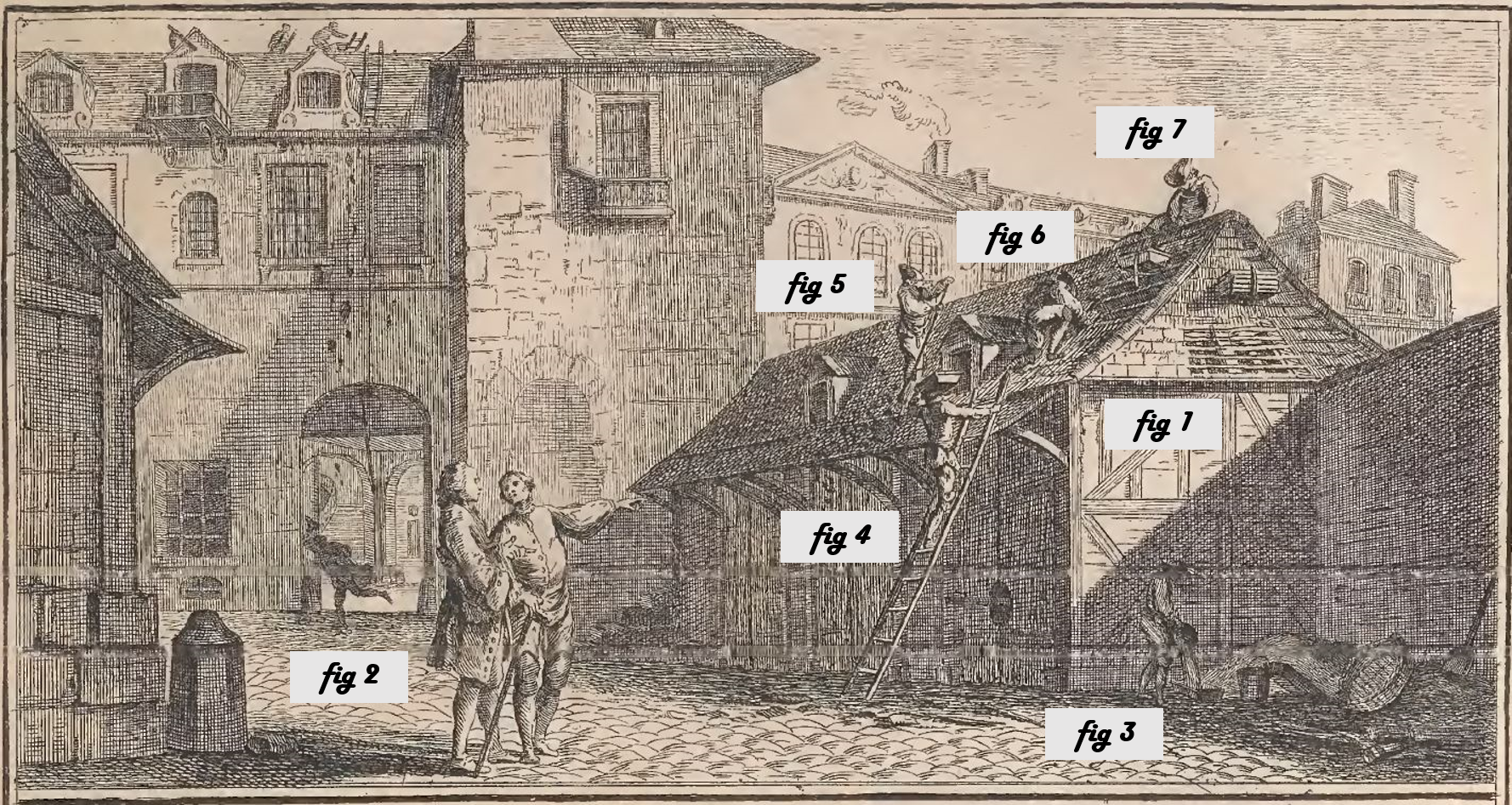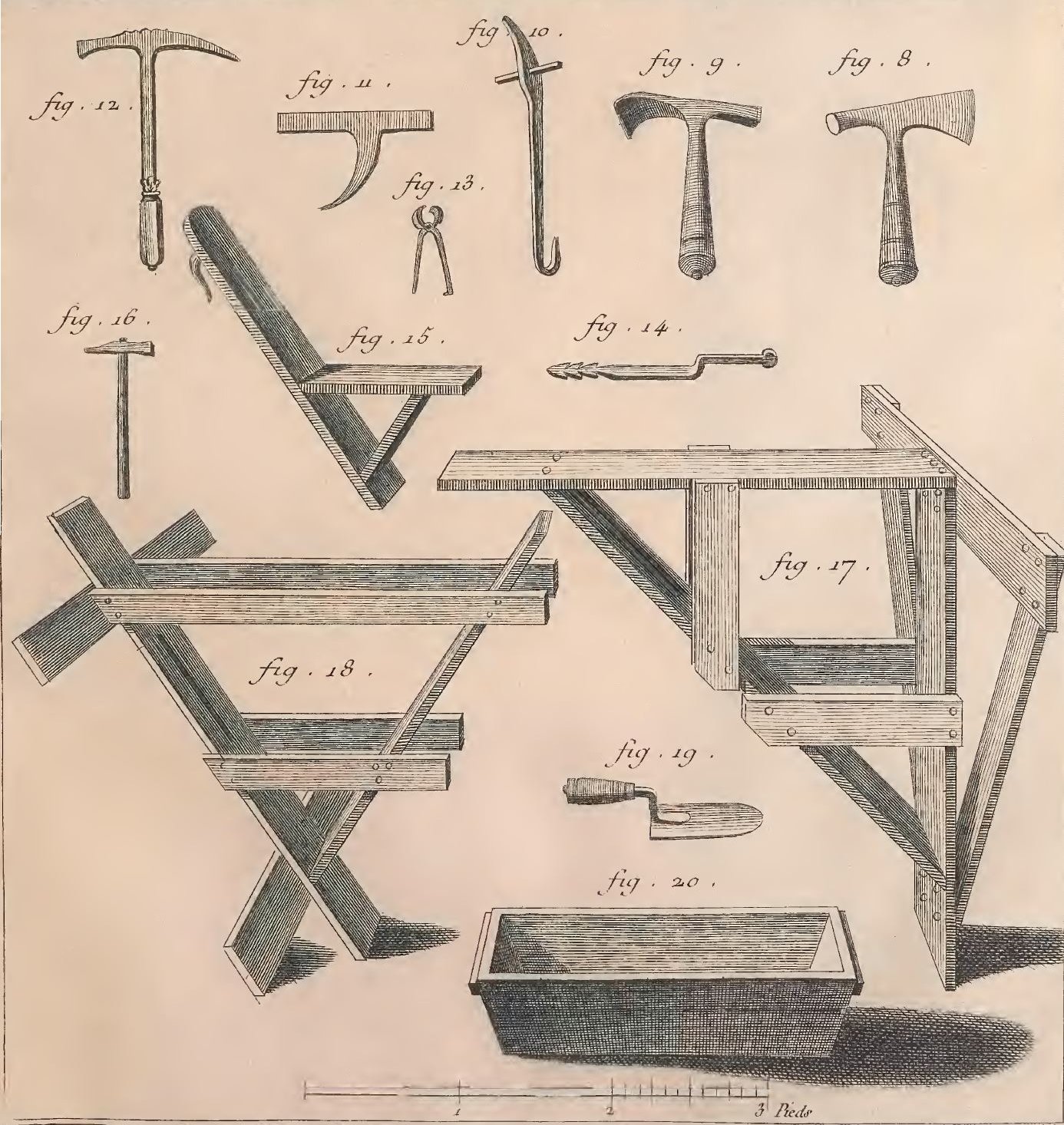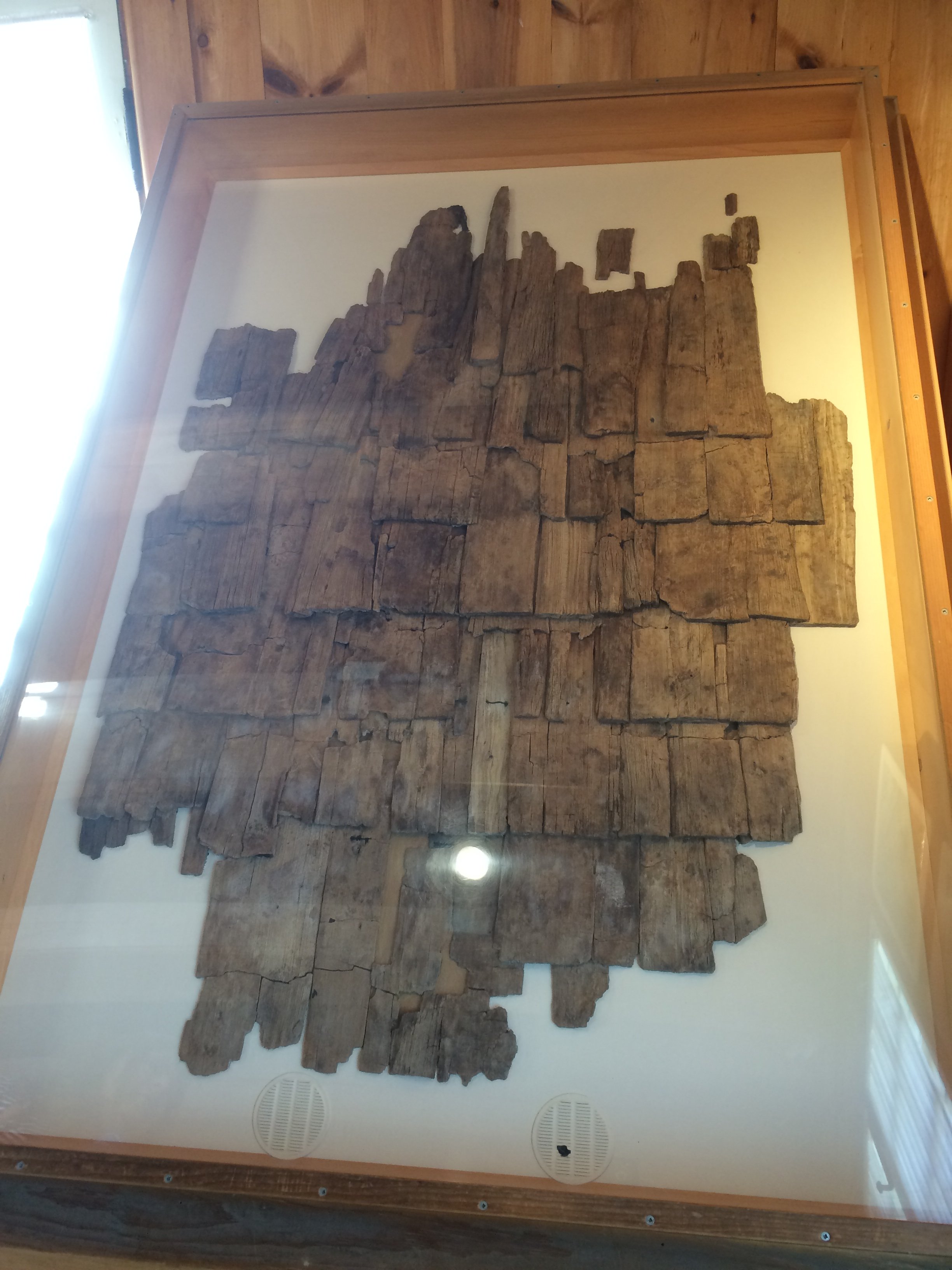By Pete Violette (VFA#1793)
Many of us know that our ancestor Charles Francois Violet’s (1716-1765) occupation was as a courvreur. Couvreur is a French word meaning “roofer”, or basically he is the craftsman who covered houses and buildings. To see tools used by a Couvreur I have turned to a 1762 French book written by Denis Diderot, and titled “Recueil de Planches, sur les sciences, les arts liberaux, et les arts mechaniques: avec leur explication” which translates as “Collection of Plates, on the sciences, the liberal arts, and the mechanical arts: with their explanation”. I find these old illustrations a wonderful art form. In the book Couvreur is listed under Architecte [architect], and he is one of the many craftsmen who would have been employed by an architect to build a house or building. I suspect Charles would have performed similar tasks and used very similar tools to those shown in the book.
Google Translate was the primary source for translation.
English titles to the figures (fig) in the woodcut illustrations from Recueil de Planches:
1. Building on whose cover [roof] we work.
2. Architect who gives orders to the principal worker.
3. Worker that prepares the mortar.
4. Worker which brings to the workers the mortar.
5. Worker who sweeps places where mortar must be used.
6. Worker laying the tiles on the roof.
7. Worker laying the ridge.
8. Hammer to cut.
9. Chopping hammer.
10. Contrelatoir [a tool used to support the slate].
11. An anvil where slates are cut.
12. Hammer [used] to cut slate.
13. Pliers.
14. Nail puller [used to cut nails holding slate to roof].
15. Bird [easel].
16. Hammer.
17. Easel.
18. Crawling easel
19. Trowel.
20. Trough to mix mortar.
For a brief explanation of the work of a Couvreur (roofer) I turned to “Dictonnaire des Arts et Metiers” which is “Dictionary of Arts and Trades”, written by Phillippe Macquer and published in 1766 by Yverdon. The dictionary explains that a Couvreur is one of the many craftsmen, along with masons, carpenters and others, who work for an architect and builds buildings according the architect’s plans. A little different than today where a building contractor would hire the craftsmen, better known today as “trades”, to build a building in accordance with the plans drawn up by the architect.
The basic definition of a Couvreur is a “workman who is permitted to cover a house”. It goes on to explain that a roof can be covered in slate, tile, thatch or shingle. Keep in mind that today’s shingles would not have yet been invented, this would have been shingles made from wood. It did go on to explain that thatch was used in the country, so I suspect what was used in towns and cities; was primarily slate, tile or shingle. What I found very interesting, for 1766 France, is that the master couvreur’s, belonged to a “brotherhood”, which collected money through a system of “fines” and money “awarded by jurors”, which was used to pay for the support and care of poor workmen of the trade, and especially those who were crippled by falls and other accidents. The dictionary also explained that the trade was obligated to warn pedestrians on the street, when there were workers on a building, or they could face a fine. It also explained that each Master Couvreur could have one married apprentice who “must be obliged for fifteen years”. I found that to be a long time for someone to be an apprentice. The dictionary also explained that in 1766 there were 167 Master Couvreur’s in Paris. During this time Paris was the second largest city in Europe and had a population of about 600,000. To see a demonstration on the use of tools to cut slate go to: https://www.youtube.com/watch?v=TGzk8loQrYQ .




